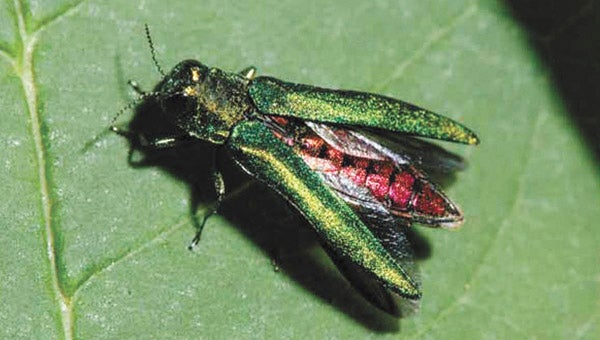City staff present plan for treatment, disposal of trees on private property impacted by emerald ash borer
Published 5:15 am Tuesday, May 14, 2024
|
Getting your Trinity Audio player ready...
|
The Albert Lea City Council heard updated plans Monday about recommendations for treatment and disposal of ash trees from private properties in the city in light of the confirmed emerald ash borer in the community.
Ryan Hajek, assistant director of public works, said the Minnesota Department of Agriculture this spring confirmed the emerald ash borer in several areas in Albert Lea.
With Albert Lea having 12,000 ash trees, he said the insect will have a significant impact on the community. He estimated that in probably three to four years if trees are not treated, many of the ash trees in the community would die.
About two years ago when the insect was confirmed in Freeborn County, Hajek said the city went after a grant that helped set up its plan for treatment of the best-quality ash trees and removal of those in poor condition on city-owned property. Part of that plan was to also come up with a plan for response for residents.
He said they want to maintain and improve the city’s tree canopy to retain the valuable benefits of trees and prevent ash trees from becoming safety hazards, which can become brittle if infected.
With this in mind, he said the city worked with Maier Tree and Lawn Care of Rochester to offer treatments of trees on private properties.
The company will offer treatments for $8 per inch diameter at breast height for trees — which would equate to less than $200 for most trees. If residents are interested in utilizing this company, they should do so by the end of July.
Residents can also work with other city-approved arborists. A list is available on the city’s website at https://cityofalbertlea.org/emerald-ash-borer/.
Hajek said treatments are usually good for two to three years.
For ash trees that are taken down on private property in the city, he recommended that property owners be able to dispose of them for free at the city’s transfer station. This would not be available to contractors or property owners outside of the city.
At the transfer station, people would have to provide their name, address, phone number and driver’s license. Brush would be placed in a designated area south of the current brush pile, and the city would add a log pile east of the existing brush pile.
Hajek asked residents with ash trees to have an arborist come out and determine if their trees can be treated or if they will need to come down.
He said most trees are likely already impacted at this point as the emerald ash borer has already been found in separate areas of the community.
Third Ward Councilor Jason Howland thanked Hajek and others in the public works department for their work on the issue.
He said he has seen the effect of the emerald ash borer with his own parents property, outside of Albert Lea. He noted he looked at one of his parents’ ash trees that was fine last year and this year is “completely dead” with bark coming off.
“It’s pretty scary stuff that this emerald ash borer is all over the place, so hopefully we can prevent as many trees as we can and save them,” Howland said.
He said the insect originated in the United States from the Great Lakes area, and is believed to have been brought on shipping containers.
The council will officially vote on the recommendations for private residents at its May 28 meeting.







